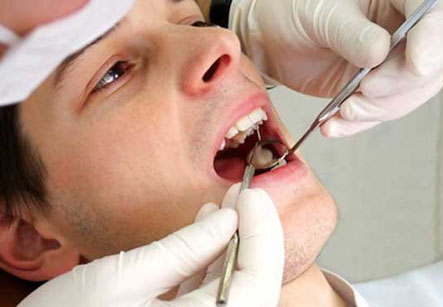Surgical Extraction
Introduction
Tooth removal (or tooth extraction) means having one or more teeth completely removed from the mouth. The extraction is usually performed by a dentist, but sometimes the procedure is done in hospital by a surgeon. When a surgical procedure is required to remove a tooth, it is called as surgical extraction.
There are several indications for removing the teeth. The most common reasons include:
• Dental decay
• Periodontal diseases
• A broken teeth which is beyond repair
• Collection of pus or abscess in the gums or around the teeth
Iran offers a superior Dental treatments that is world best quality. For patients from the USA, and Europe for example, the savings can be 60% or more

• Overcrowding of teeth
• Impacted wisdom teeth causing infection and pain
• Baby tooth which does not give place for permanent tooth to erupt
• To create space before fixing dental bridge
Referral to specialist:
The dentist or a primary physician first consulted usually recommends and refersthe patient to a suitably trained and skilled dentist or maxillofacial surgeon. Alternatively in some circumstances your own general dentist may perform the procedure.
Preparation before surgical extraction:
1. The dentist or oral surgeon will take an X-ray of the area to help plan the best way to remove the tooth. If removal of wisdom teeth is planned, the dentist may order panoramic view of X-ray. This view takes a picture of all the teeth in one film.
2. Full medical and dental history and a list all medicines (prescription and over-the-counter drugs, vitamins and supplements) taken by the patient must be informed to the dentist.
3. Some doctors may prescribe antibiotics to be taken before and after surgery. This practice varies by the dentist or oral surgeon. Antibiotics are likely to be given in case of:
• The patient has infection at the time of surgery
• Weakened immune system
• A long surgery is expected
• The patient has specific medical conditions
4. The patient may have intravenous (IV) anesthesia, which can range from conscious sedation to general anesthesia. This is discussed with the patient.
5. Clothing with short sleeves or sleeves that can be rolled up easily is recommended. This allows access for an IV line to be placed in a vein.
6. Don’t eat or drink anything for six or eight hours before the procedure.
7. History of cough, stuffy nose or cold up to a week before the surgery should be informed to the doctor. The doctor may want to avoid anesthesia until the cold subsides. If the patient had nausea and vomiting the night before the procedure, the doctor may advice a change in the planned anesthesia or the extraction may have to be rescheduled.
8. After the extraction, someone will need to drive the patient home and stay there.
On arrival at the day surgery:
After admission to the hospital, the necessary paperwork is done. Prior to the surgery, the patient is asked to sign a consent form regarding the procedure and its possible complications.
Procedure
1. An intravenous line usually put in the back of the hand to receive a sedative injection. The anesthetist will generally discuss the anesthetic procedure with the patient.
2. After this, the oral surgeon makes an incision in the gum tissue above the tooth to allow the tooth to be grasped.
3. Then, the surgeon frees the tooth from surrounding tissue, and extracts it.
4. In case if the roots of the tooth are curved or the tooth is impacted, small portions of the surrounding bone may be removed using a drill or bone cutting knife called as an osteotome to free the tooth.
5. As the extraction procedure is finished, the oral surgeon closes the incision using dissolvable sutures and covers the wound with gauze pads which are called as dental packs.
After dental extraction surgery:
1. The patient wakes up in a recovery area where he or she is closely monitored by nursing staff until the effect of anesthesia wears off. Mouth may still be numb when you wake up.
2. Most people go home on the same day or may stay overnight, depending on the procedure and anesthesia used.
3. The hospital staff gives specific instructions to the patient about any side effects expected and any symptoms for which further assistance should be sought.
4. The specialist usually advices about resuming eating and drinking after the surgery, managing pain relief and other aspects of dental care to be followed after going home.
5. In most cases, the recovery period lasts only for a few days.